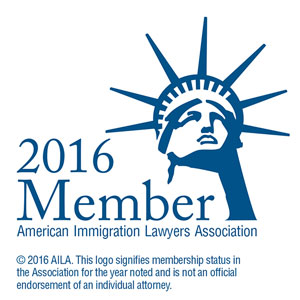Guide to Terminated Noncitizen Workers: Preserving Nonimmigrant Status and Permanent Residency Options
By Cyrus D. Mehta
The sudden layoffs of nonimmigrant workers in H-1B and other statuses at Twitter and other tech companies in the US create additional concerns as their visa status is tied to the employer. Those who have been sponsored for permanent residence face additional concerns. We provide a quick guide to employees who have been laid off and how they can still be able to take steps to remain in status, and take advantage of the priority date already established on their behalf if they have been sponsored for permanent residency. Although this blog provides guidance to terminated nonimmigrant workers, our recent prior blogs, here and here, guide employers on their obligations when nonimmigrant workers are terminated
60 Day Grace Period
As discussed in our prior blog, 8 CFR §214.1(l)(2) allows E-1, E-2, E-3, H-1B, H-1B1, L-1, O-1or TN nonimmigrant workers a grace period of 60 days upon a cessation of their employment. The 60-day grace period is indeed a salutary feature and was not around during prior disaster episodes. Up until January 17, 2017, whenever workers in nonimmigrant status got terminated, they were immediately considered to be in violation of status. There was also no grace period to depart the United States. Therefore, if a worker got terminated on a Friday, and did not depart on the same day, but only booked the flight home on Sunday, this individual would need to disclose on a future visa application, for all time, that s/he had violated status. Derivative family members, whose fortunes were attached to the principal’s, would also be rendered out of status upon the principal falling out status. Thus, the 60-day grace period not only gives the worker more time to leave the United States, but it also provides a window of opportunity to transition to another employer who can file an extension or change of status within the 60-day period. Similarly, the worker could also potentially change to some other status on their own, such as to F-1, after enrolling in a school. If the worker may need more time to leave the US beyond the 60 days, they can apply for a change to B-2 visitor status. Prior to January 17, 2017, nonimmigrant workers who fell out of status upon cessation of their employment, and sought a late extension or change of status had to invoke the USCIS’s favorable discretion pursuant to 8 CFR §214 .1(c)(4) and 8 CFR §248(b)(1)-(2) by demonstrating, among other things, extraordinary circumstances.
Thus, an H-1B worker who has been terminated may be able to seek another employer to file an extension of status on their behalf within the 60 day grace period. As this worker has already been counted under the H-1B cap, the employer will not need to register under the next H-1B lottery and can immediately transfer H-B status through the new employer.
The maximum time that a noncitizen can spend in H-1B status is six years. If the worker has spent less than six years in the US, they can seek to obtain the remainder of unused time in H-1B status for a maximum of six years. Any time not spent in the US during the prior H-1B status period can be recaptured based on trips made abroad. See 8 CFR 214.2(h)(13)(iii)(C). If the individual is the beneficiary of an approved I-140 petition, and the final action date is not yet current under the State Department Visa Bulletin in the employment second (EB-2) or employment third preference (EB-3), the worker can obtain a three year H-1B extension even beyond the six years until the date has become current pursuant to § 104(c) of the American Competitiveness in the 21st Century Act. If the final action date is current under EB-2 or EB-3, the worker is entitled to a one year H-1B extension beyond six years under §106(a) of AC21. However, if an I-485 adjustment of status application has not been filed within one year, a worker may be precluded from talking advantage of the one year extension unless it can be shown that failure to file an immigrant visa or adjustment of status application was beyond the worker’s control, and this has been further explained in our prior blog.
Although a laid off L-1 worker will also be able to avail of the 60-day grace period, and is entitled to a maximum of seven years if in L-1A status or five years if in L-1B status (including recaptured time), filing an L extension through another employer would be challenging as the worker has to demonstrate that they have had one year of qualifying experience in an executive, managerial or specialized knowledge capacity for a parent, branch or subsidiary of the US entity in the past three years. If the employer can only file a change of status to H-1B, then unless the worker has previously been counted under a prior H-1B cap, they will have to wait to be registered in the next H-1B lotter in March 2023. Other options could include changing status to O-1A if the terminated L-1 worker can qualify as a person of extraordinary ability.
Garden Leave and Nonproductive Status
What is less clear is when termination occurs with respect to an H-1B worker. An employer can terminate on November 1, 2022 and still pay the employee the full wage but keep this person in a nonproductive status for several weeks or months. Let’s assume in this example that the worker is terminated on November 1, 2022, but continues to be paid from November 1, 2022 till December 1, 2022 while in nonproductive status. This nonproductive period is known as “garden leave” where the terminated worker is still considered an employee but not required to engage in productive work for the employer. The employer utilizes “garden leave” to disincentivize the employee from immediately working for a competitor or as part of a severance agreement. Does the termination in this scenario occur on November 1, 2022 or on December 1, 2022, which is when the garden leave period ends and the worker ceases to receive a salary in accordance with the terms of the H-1B petition?
According to a June 2020 USCIS Policy Memo, the USCIS has indicated that “[t]he failure to work according to the terms and conditions of the petition approval may support, among other enforcement actions, revocation of the petition approval, a finding that the beneficiary failed to maintain status, or both.” Based on this policy, it would be safer to consider the termination as occurring on November 1, 2022 rather than December 1, 2022. Yet, the USCIS acknowledges that there may be situations when H-1B status is not violated if the worker is on leave under statutes such as the Family and Medical Leave Act or the Americans with Disabilities Act, even if the worker is not paid.
The USCIS also gives the officer discretion to determine whether nonproductive status constitutes a violation of the beneficiary’s nonimmigrant classification. The following extract from the USCIS Policy Memo is worth noting:
In assessing whether a beneficiary’s non-productive status constitutes a violation of the beneficiary’s H-1B nonimmigrant classification, the officer must assess the circumstances and time spent in non-productive status. While neither statutes nor regulations state the maximum allowable time of non-productive status, the officer may exercise his or her discretion to issue a NOID or a NOIR to give the petitioner an opportunity to respond, if the time period of nonproductive status is more than that required for a reasonable transition between assignments. As always, if the officer encounters a novel issue, the officer should elevate that issue to local service center management or Service Center Operations, as appropriate.
A terminated H-1B worker may need more time to find another job and thus extend the commencement of the grace period to a later date, especially when the worker continues to be paid and treated as an employee during the nonproductive status. There might be a basis for the termination date to be December 1, 2022 rather than November 1, 2022 given that the USCIS allows the officer to assess the circumstances and time spent in nonproductive status, although it would be far safer and more prudent to consider November 1, 2022 as the termination date.
One should also note a 1999 advisory opinion concerning reductions in force. USCIS indicated that a severance package that offered terminated H-1B and L-1 employees their normal compensation and benefits for a 60-day period did not preserve the beneficiaries’ nonimmigrant status. Specifically, Branch Chief Simmons wrote, “An H-1B nonimmigrant alien is admitted to the United States for the sole purpose of providing services to his or her United States employer. Once H-1B nonimmigrant alien’s services for the petitioning United States employer are terminated, the alien is no longer in a valid nonimmigrant status. However, an H-1B worker who has not been terminated, but is on leave, can distinguish his or her situation from one who has indeed been terminated.”
Termination after Employment Sponsorship for Permanent Residence Already Commenced
If the worker is already the beneficiary of an approved I-140 petition and is terminated, a new employer in addition to transferring the H-1B status may also file a new labor certification, and upon approval, file another I-140 petition. The priority date of the prior I-140 petition can still be retained.
Under 8 CFR 204.5(p), an employment authorization document (EAD) may be issued to beneficiaries of I-140 petitions in the United States on E-3, H-1B, H-1B1, O-1 or L-1 nonimmigrant status if they can demonstrate compelling circumstances and if their priority dates are not current. While compelling circumstances have not been defined in the rule, DHS has suggested illustrative circumstances in the preamble to the high skilled worker rule, which includes serious illness and disabilities, employer dispute or retaliation, other substantial harm and significant disruptions to the employer. Regarding what may constitute significant disruption, DHS has suggested loss of funding for grants that may invalidate a cap-exempt H-1B status or a corporate restructure that may no longer render an L-1 visa status valid.
Anecdotal evidence suggests that USCIS has been very niggardly in issuing employment authorization under compelling circumstances.
If the Form I-485 application has been pending for 180 days or more, the worker can exercise job portability under INA 204(j) by taking up a job or being offered a job in a same or similar occupation with another employer. The underlying labor certification and I-140 will still remain valid upon exercising portability under INA 204(j). The applicant will need to submit Form I-485, Supplement J.
Under 8 CFR 245.25(b), “[t]he term “same occupational classification” means an occupation that resembles in every relevant respect the occupation for which the underlying employment-based immigrant visa petition was approved. The term “similar occupational classification” means an occupation that shares essential qualities or has a marked resemblance or likeness with the occupation for which the underlying employment-based immigrant visa petition was approved.”
It is also possible for an adjustment applicant to “port” to self-employment if employment prospects are bleak.
[This blog is for informational purposes, and should not be viewed as a substitute for legal advice]




